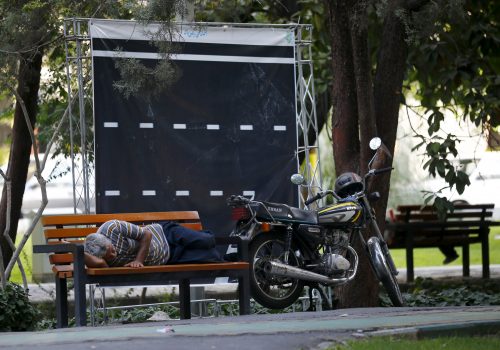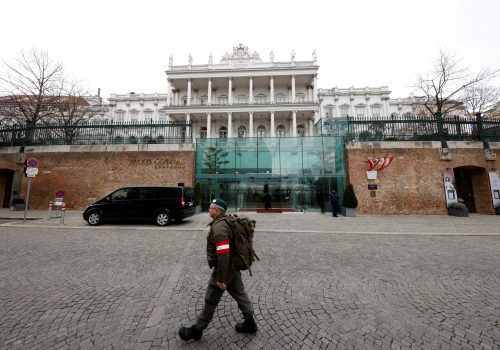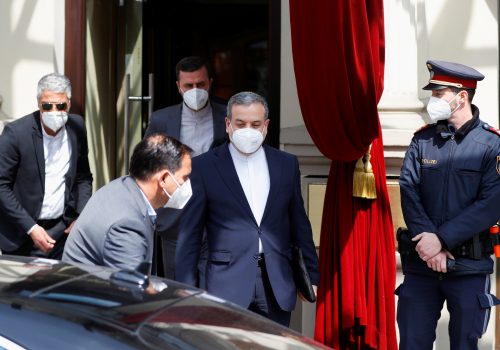Amongst Iran’s super-rich are tax evaders too. And the government isn’t doing much about it.
Iran is one of the richest countries in terms of potential wealth, possessing the world’s fourth largest crude oil reserves and second largest natural gas reserves. Such countries, often called “rentier states,” are usually self-sufficient in revenue generation and taxes account for a small share in their budgets. The result is a de-facto tax haven for wealthy residents.
In the last few years, Iran has adopted new tax policies in part to compensate for revenue lost due to US economic sanctions. But the super-rich are still barely affected.
Iran’s fastest growth—12.5 percent—occurred in 2016 in the aftermath of the Joint Comprehensive Plan of Action (JCPOA), which revoked multilateral sanctions on Iran in exchange for peaceful use of the country’s nuclear program. Since 2017, Iran’s economy has been declining and, in 2020, it faced a nearly 5 percent drop in GDP in part due to the Donald Trump administration quitting the JCPOA in May 2018 and reimposing US sanctions.
Since January 2018, the value of the rial against the US dollar has plummeted by 646 percent (from 42,880 rials to one US dollar to 320,000 rials in July 2022). The inflation rate topped 40 percent in 2021 and the unemployment rate is in double digits.
Iran had a budget deficit of $12 billion in the current Iranian calendar year (March 2021 to March 2022)—more than 30 percent of the total budget. Due to the decrease in oil exports, Tehran has had no choice but to print money, which has compounded inflation and led to increases of more than 50 percent for foodstuffs.
These problems have forced Iran to reformulate its tax policies. The super-rich, it would seem, are a natural target. Forbes magazine reported in June 2021 that, despite Iran’s overall economic woes, the number of Iranian super-rich has grown by 21.6 percent annually, compared to 6.3 percent worldwide.
Forbes has estimated the number of Iranian millionaires at 250,000, ranking Iran fourteenth globally in terms of rich people. With a population of eighty-six million, that means about 0.3 percent are super-rich. Saudi Arabia, in comparison, has 210,000 millionaires, even though the country exports 8.2 times more oil. With a population of thirty-six million, that means that 0.24 percent are super-rich.
To further understand the disparity in Iran, 0.3 percent of Iranians have at least $250 billion in assets. That is 8 percent more than Iran’s 2021 GDP of $231.55 billion.
In February, Iranian President Ebrahim Raisi ordered the implementation of forty-eight large industrial projects worth $17 billion in thirteen provinces, which state media called “the largest industrial investment in the history of Iran’s economy.” However, these projects amount to only one-fifteenth of the assets in the hands of the Iranian super-rich.
Globally, approximately 36 to 90 percent of government funding comes from taxes. In Iran, however, the contribution is 40 percent. Iran’s super-rich account for 4 or 5 percent at best.
Tax evasion is estimated at one quadrillion rials ($3.125 billion at the exchange rate of 320,000 rials), of which 50 percent is direct tax evasion, and the rest is due to refusal to pay. Rajab Rahmani, a member of the parliament’s budget committee, announced that tax evasion equals the budgets of fifteen of Iran’s thirty-one provinces.
One reason the super-rich pay so little is because the interest on bank deposits isn’t taxed.
Omid Ali Parsa, the former head of Iran’s National Tax Administration (INTA), disclosed that half of the country’s billionaires pay no taxes—based on a review of bank transactions of some three hundred thousand people with incomes exceeding 10 billion rials—while the other half pay less than what is required.
It has been more than a century since the first tax law was enacted in Iran but only in the last decade has the Islamic Republic begun to utilize taxes more seriously. Many Iranians, however, either consider taxation oppressive or aren’t aware of their obligations.
Evasion is aided by the fact that government agencies do not provide sufficient information to the tax agency. For example, a tax on luxury and expensive houses has been in the country’s budget for three years, but no tax revenue was obtained from this source in the first two years. According to the Iranian Students News Agency, only a little more than $156,000 has been collected in the last five months. The reasons include the newness of the law, the lack of a complete database of luxury houses, and the absence of means for enforcement.
Over the years, despite the Islamic Republic’s pledges of economic equity, the super-rich—which include many regime elites—have been able to change some laws to their advantage due to their access to centers of power. For example, only 35 percent of physicians are registered in the tax system. Due to their influence over parliament, they have managed to limit the tax on their income to 10 percent while others pay up to 30 percent.
Other centers of power, institutions, and organizations under the supervision of Supreme Leader Ayatollah Ali Khamenei are exempt from some taxes. The Astan Quds Razavi and Mostazafan Foundation are two examples. The first is a religious institution that is under the direct supervision of the Supreme Leader and is the custodian of a major shrine in the Shia religious center of Mashhad.
The leader of the Iranian revolution and first Supreme Leader, Ayatollah Ruhollah Khomeini, also exempted Astan Quds Razavi from paying income taxes. It was only obliged to pay value added tax and some taxes for employees.
The Astan Quds Razavi Foundation possesses a lot of urban real estate across the country, as well as factories, farms, and mines. It is difficult to estimate its assets because officials have less faith in financial transparency. However, Iranian economists estimate its net worth to be $15 billion or more.
Although this institution has many endowment properties that are exempt according to the law, its forty-nine economic, social, educational, cultural, and media companies could theoretically be taxed. But the authorities have chosen otherwise.
Given Iran’s economic crisis, there is widespread public resentment of the ability of the super-rich to avoid paying taxes. It remains to be seen whether the government will change its policies in the future.
Mohammad Salami is a research associate at the International Institute for Global Strategic Analysis (IIGSA) in Islamabad, Pakistan. Follow him on Twitter: @moh_salami.
Further reading
Tue, Feb 1, 2022
Can President Ebrahim Raisi turn Iran’s economic Titanic around?
IranSource By Nadereh Chamlou
The Ebrahim Raisi team is seen as the weakest since the revolution, but one with the strongest links to the IRGC, and where allegiance trumps expertise.
Thu, Mar 3, 2022
Can Iranian oil stabilize a volatile market?
IranSource By
As fuel prices skyrocket following the Russian invasion of Ukraine, another major supplier of oil and natural gas is poised to play an important role.
Fri, Apr 23, 2021
‘Poison pill sanctions’ are hard for Vienna negotiators to swallow
IranSource By Brian O’Toole
“Poison pill sanctions,” a large list of sanctions that would have been allowed under the 2015 nuclear accord, are clearly the sticking point in the ongoing negotiations and the focus of the technical working groups in Vienna.
Image: Couples look at jewellery displayed at an international gold and jewellery fair in Tehran December 24, 2010. REUTERS/Morteza Nikoubazl


